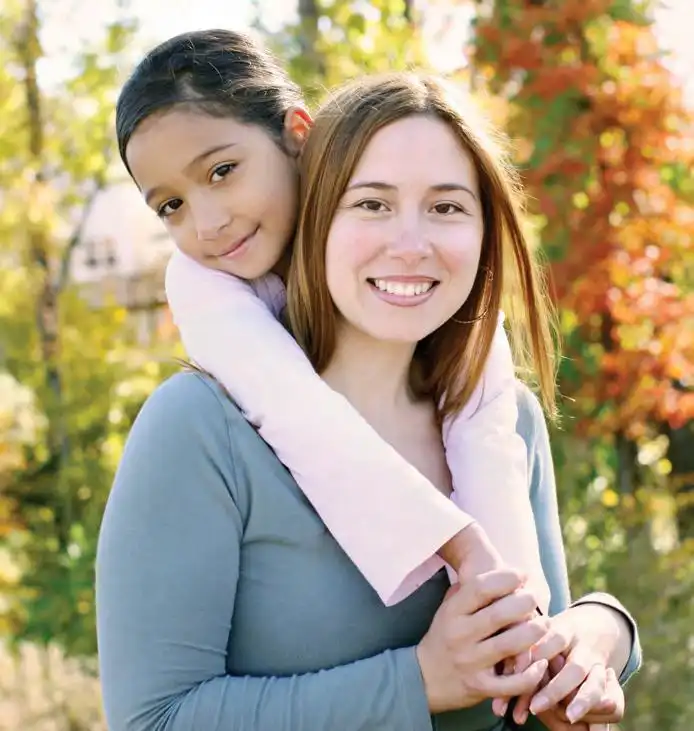
3 minute read
NOT PLANNING for a MIRACLE
a family’s nicu journey
Megan and Blaine Kummer’s journey to parenthood included ups, downs, hardships and miracles. They discovered they were blessed with twins, then received tremendous support and care when, unexpectedly, their sons were born four months early.

It was October 2015, and Megan was only 22 weeks pregnant when she began having what she assumed were contractions. After a call to the family birth center nurse line, she headed to the Sanford Family Birth Center in Fargo. She assumed the hospital would tell her to turn around and head back home, but instead Megan found out she was in labor and needed to start immediate bed rest.
She was given medication to stop her labor and placed on a clear liquid diet should an emergency C-section be necessary. Over the next several days, the couple remained at the hospital — Megan never leaving her hospital bed — while Sanford’s family birth center team worked to delay delivery as long as possible.
“At that point, there was really no question the boys would be premature, but the question was how premature. Every day, every week improved their chances of survival,” says Megan.
Each obstetrician coming on for their shift would visit the Kummers to discuss their plan and explain what would happen if labor could no longer be stopped. Detailed discussions provided a general overview of the process, risks and who would be part of the care team.
“Many hospitals don’t offer neonatal care that early, not until 23 or 24 weeks gestation,” explains Megan. “But Sanford’s team provided us statistics and told us everything our family would be facing with premature babies. They estimated the twins were decent sized, at least one pound, and they were willing to give our babies a chance.”
Megan continues, “We made it six days. Then on November 4, 2015, at 22 weeks and six days gestation, Owen (which means young warrior) and Liam (strong-willed warrior) were born. At 11 inches and just over one pound each, Liam and Owen were immediately admitted to the Neonatal Intensive Care Unit (NICU).”
The twins didn’t have some of the issues premature babies commonly face, such as brain bleeds. Still, every day was critical. A whirlwind of care and procedures followed including PICC lines, head ultrasounds, X-rays, eye exams, blood transfusions, ventilators, labs, heart echocardiograms and more.

“There was never a single point we felt we were smooth sailing. Having babies that early, there is no normal course, no normal path. From birth, we knew we were going to be in the hospital a long time, and we knew the hospital was where we were going to make our home. Each day we’d spend hours — at first next to the Isolettes, later side-by-side in recliners — holding a baby each,” says Megan.
“We had Liam for four months — 130 days — before we lost him. He died 10 days after his due date,” continues Megan. “Respiratory-wise he just wasn’t able to keep up, and after he passed away, we also found out he had gotten sick.”
While grieving the loss of one child, the family had to keep moving forward with the other. Shortly after Liam passed away, the family made the decision that Owen needed long-term breathing support through a tracheostomy. This support would allow him to continue to grow, both physically and developmentally. Owen also had a gastrostomy tube (feeding tube) placed to optimize his nutrition, which was critical to his respiratory growth.



Owen remained at the Sanford Children’s Hospital for a total of 302 days before finally being able to head home. Now, Owen is 18 months and exceeding everyone’s expectations with his progress. Sanford provides in-home therapies four days a week including occupational therapy and physical therapy. Medically, Owen is slowly weaning off of his breathing support and continues care with Sanford pediatrics and several specialties.
Megan says, “I never wanted a miracle. Let alone two. I wanted a couple of fat, lazy babies that I waited on hand and foot, who couldn’t do anything for themselves, and that relied on us for their every need. But that’s not what we got. We got fighters. We got warriors. We got miracles. And that was in no small part because of support from our family, friends, community and the quality of care at Sanford Children’s Hospital.”









